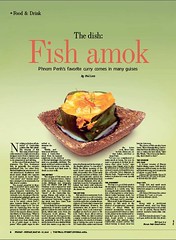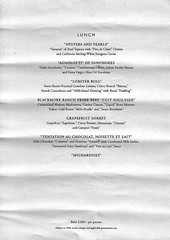In short, no.
In New York, transplanted Hong Kong hands have a couple of Chinatowns to choose from. Colombians can head out to Queens for an oblea caramel wafer and yucca bread under the elevated train tracks. Eastern Europeans longing for a borscht can ride the F train to Brighton Beach. West Africans have the Bronx, North Africans have the East Village — and even the Uighurs, the Sephardim of the Silk Road, can find home cooking out in Rego Park. But for Cambodians (and nostalgic travelers like me), a taste of home remains elusive.
Matthew Fishbane attempts to answer the eternal question about Cambodian food: why isn’t it anywhere apart from Cambodia? He answers with a good round-up of the trials and tribulations of Cambodian restauranteurs in the USA.
See also: Khmer food is good, you just suck at eating it, On the trail of Cambodian food in New York



